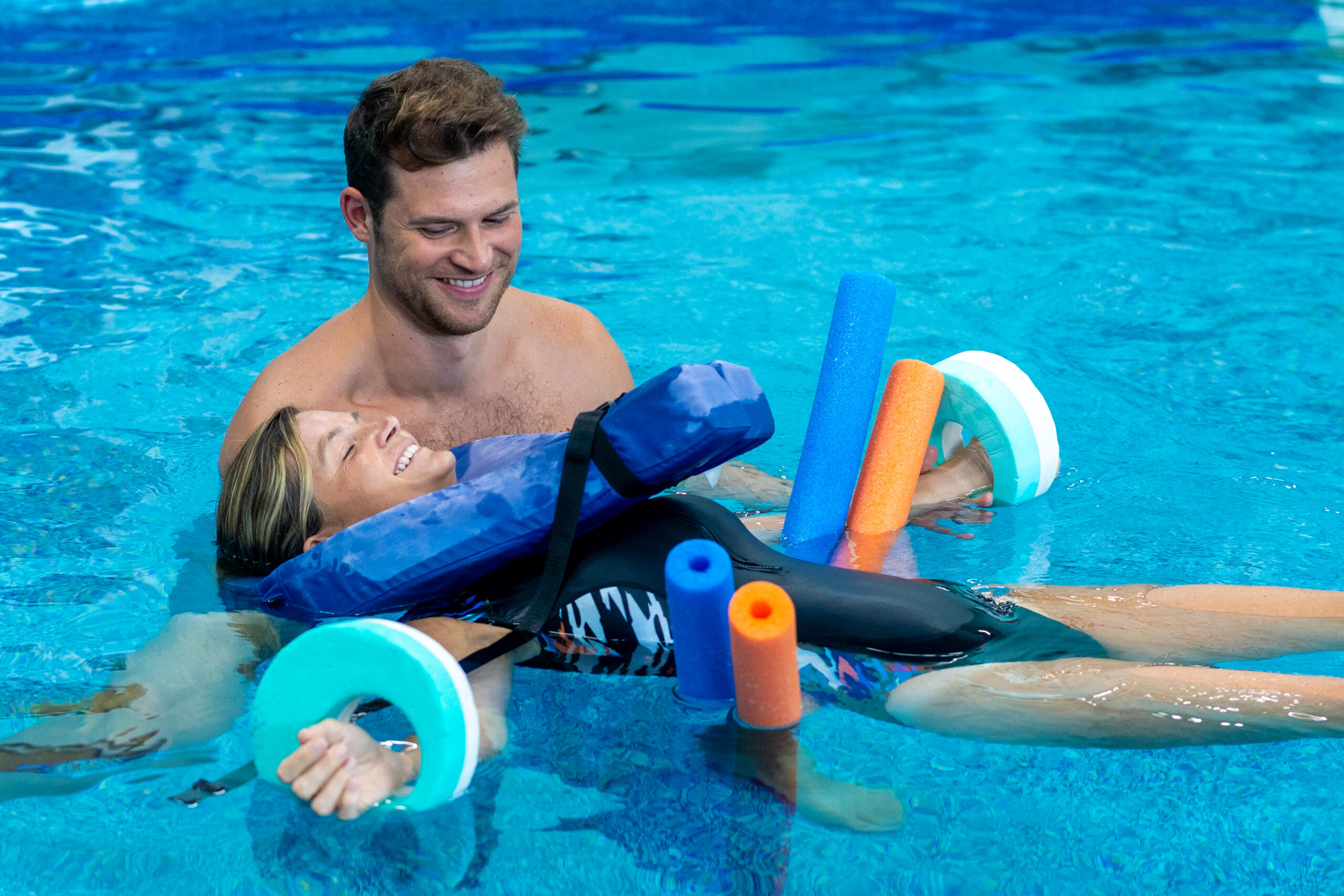How Does Aquatic Therapy Compare to Land-Based Physical Therapy?
Aquatic therapy and land-based physical therapy each have strengths: water therapy excels at pain-limited movement, early weight-bearing, and balance retraining, while land-based therapy is essential for high-load strengthening, sport-specific retraining, and functional task practice in the exact environment of daily life. Choosing between them depends on clinical indicators such as pain severity, weight-bearing restrictions, and goals like return to sport versus fall prevention. Combining aquatic and land-based approaches often yields the best outcomes—water programs build tolerance and foundational movement patterns that can be translated to progressive land-based loading. The following subsections detail unique water advantages, decision criteria for preference, and models for integrating both approaches.
What Are the Unique Advantages of Water Physical Therapy?
Water therapy’s unique advantages include reduced joint load via buoyancy, consistent multidirectional resistance from viscosity, edema control through hydrostatic pressure, and relaxation from warmth, which together make movement less painful and safer for high-risk patients. These attributes allow therapists to prescribe higher-repetition, lower-pain exercise that targets motor learning and endurance without exacerbating symptoms; this is particularly useful for early post-op care and patients with severe osteoarthritis or obesity. Water also provides a graded challenge for balance training with lower injury risk, so therapists can efficiently address confidence and postural control in progressive steps. These advantages complement land-based targets and often accelerate readiness for functional land training.
Recognizing water’s distinct properties helps clinicians and patients decide when to prioritize aquatic modalities.
When Is Aquatic Therapy Preferred Over Traditional Rehabilitation?
Aquatic therapy is preferred when patients have severe pain with weight-bearing, need early protected mobilization after surgery, have significant balance or fall risk concerns, or exhibit anxiety that limits participation in land-based exercise. Contraindications such as open wounds, uncontrolled seizures, or certain cardiac instability require screening, but for many conditions water provides a safer alternative for initiating movement. Therapists weigh factors—medical stability, wound status, infection risk, and specific functional goals—when recommending aquatic therapy as the primary mode. When aquatic therapy is chosen, it is typically because the environment uniquely addresses barriers that prevent effective land-based rehabilitation.
These decision criteria guide appropriate selection and ensure safety and effectiveness.
Can Aquatic Therapy Be Combined with Land-Based Exercises?
Yes—effective programs combine aquatic and land-based exercises by using water early to restore pain-free range and confidence, then progressing to land-based strengthening and task-specific retraining for final functional carryover. Sample combined-week plans might use two aquatic sessions focused on mobility and balance plus one land-based session emphasizing strength and function, with periodic reassessment to shift emphasis toward land work as tolerance improves. Integration models prioritize motor learning principles—repetition, task specificity, and progressive loading—using the water to scaffold early gains and land exercises to consolidate functional skills. This hybrid approach often maximizes recovery speed and long-term functional outcomes.
Combining modalities leverages each environment’s strengths and creates a practical path to full recovery.
What Are Recent Research Findings and Success Stories in Aquatic Exercise Therapy?
Recent studies through 2025 reinforce aquatic therapy’s effectiveness for pain reduction, functional improvement, and balance gains across several conditions, although evidence quality varies by indication and methodology. Systematic reviews and randomized trials report moderate benefits for knee osteoarthritis pain and function, improvements in gait and balance for neurological populations, and faster early mobility after some joint surgeries when aquatic programs are included. Case studies and clinical reports demonstrate measurable patient improvements—such as increased gait speed and reduced fall risk factors—when programs are targeted and progress is tracked. The following subsections summarize recent evidence, provide concise anonymized case examples, and cite expert consensus positions to contextualize findings for clinicians and patients.
What Do Recent Studies Say About Aquatic Therapy’s Effectiveness?
Recent studies indicate aquatic therapy produces moderate, clinically meaningful improvements in pain and function for osteoarthritis and beneficial gait and balance changes in neurological populations, with effect sizes often favoring combined aquatic-plus-land programs over standard care alone. Randomized controlled trials and systematic reviews from the early 2020s report consistent short-term gains, though longer-term maintenance varies and depends on program adherence and subsequent land-based progression. Methodological heterogeneity exists—differences in pool temperatures, session frequency, and techniques—so clinicians should interpret evidence within the context of program specifics and patient characteristics. Overall, current research supports aquatic therapy as a valuable component of multimodal rehabilitation.
This body of evidence supports incorporating aquatic programs when clinical indicators align and program design follows best-practice parameters.
How Has Aquatic Therapy Helped Patients Recover from Surgery and Chronic Conditions?
Anonymized case vignettes illustrate typical outcomes: a patient after knee replacement who began pool walking at two weeks post-op regained functional walking faster with less pain than expected, and a person with Parkinson’s who participated in targeted aquatic balance sessions showed improved stride length and fewer freezing episodes during dual-task gait tests. These examples show measurable timelines—early mobility gains within weeks and balance or endurance improvements over months—when aquatic programs are tailored and progressed. Tracking objective metrics such as gait speed, timed-up-and-go, and patient-reported pain scales provides measurable evidence of success and supports adaptive program planning.
Documented case outcomes reinforce that individualized aquatic therapy often accelerates recovery trajectories when integrated with broader rehabilitation plans.
What Conditions Can Be Treated by Aquatic Therapy?
Aquatic exercise therapy is effective for a broad range of conditions—musculoskeletal, neurological, cardiopulmonary, and pediatric—because the water environment can be adapted to specific goals like pain reduction, mobility restoration, strength building, and respiratory conditioning. Conditions commonly treated include osteoarthritis, chronic low back pain, post-operative joint rehabilitation, Parkinson’s disease, stroke, multiple sclerosis, pediatric motor disorders, spinal cord injury adaptations, fibromyalgia, osteoporosis, and COPD.

